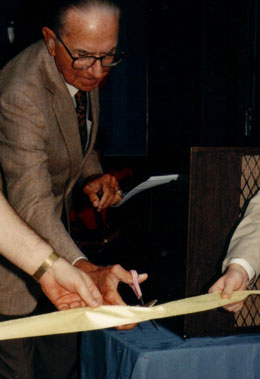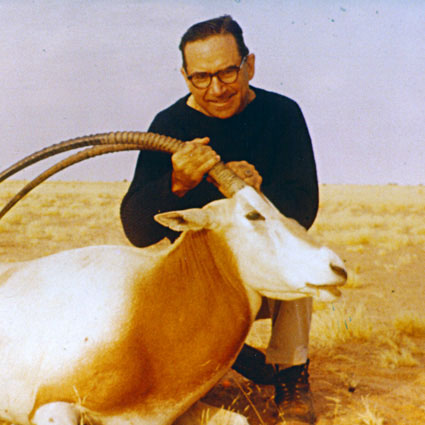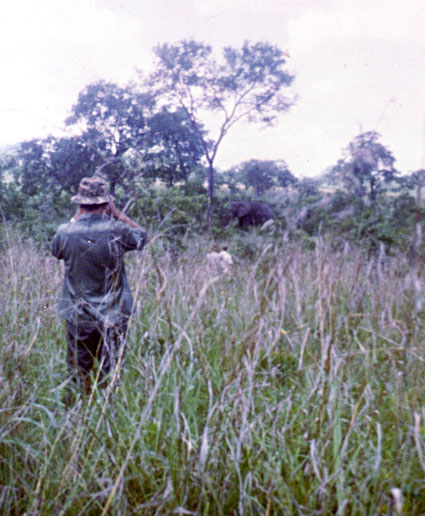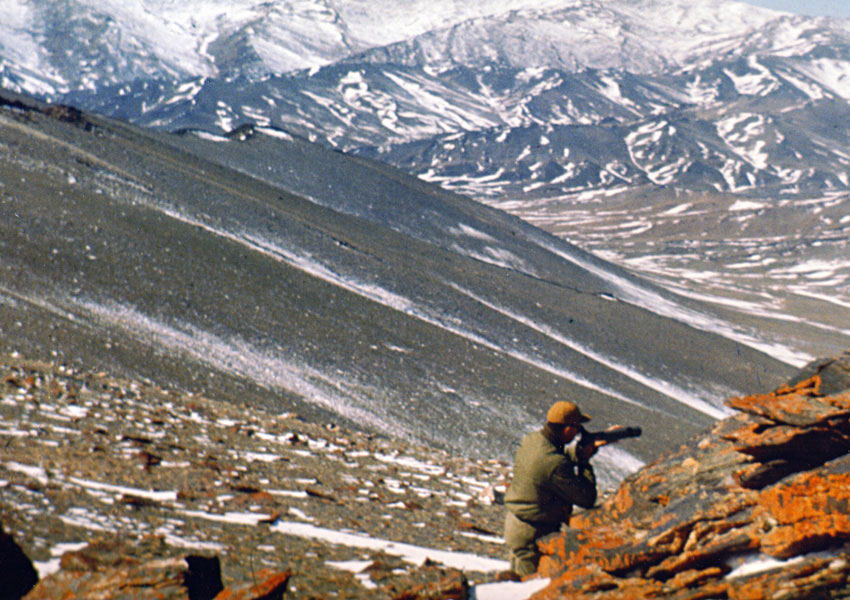|
  Dan Maddox began managing his father’s business during the Great Depression, when his father died unexpectedly. In 1944 he founded Associates Capital Corporation. By the 1970’s he was CEO of Gulf & Western financial companies that eventually became Ford Motor Credit. Beginning in 1949, Dan devoted one month out of each year for safari to explore his passion for international wildlife. He completed twenty-seven safaris in Africa, three in Asia Minor, five in India, two in Mongolia, two in Afghanistan, as well as forty in the Western Hemisphere. Dan was proud to be a hunter who also participated in animal conservation projects to help assure an abundance of wildlife for future generations. Dan Maddox began managing his father’s business during the Great Depression, when his father died unexpectedly. In 1944 he founded Associates Capital Corporation. By the 1970’s he was CEO of Gulf & Western financial companies that eventually became Ford Motor Credit. Beginning in 1949, Dan devoted one month out of each year for safari to explore his passion for international wildlife. He completed twenty-seven safaris in Africa, three in Asia Minor, five in India, two in Mongolia, two in Afghanistan, as well as forty in the Western Hemisphere. Dan was proud to be a hunter who also participated in animal conservation projects to help assure an abundance of wildlife for future generations.
Dan received both the Winchester and Weatherby awards as the best hunter in the world. He was inducted into the Hunting Hall of Fame both for his hunting skills and his work in animal conservation. His collection was all legally taken in compliance with the best management practices of his time and before the existence of an endangered species list. He selected the old male far past his breeding cycle and which generally had been driven out the herd by the younger male. The taking of that amimal had no effect upon the survival of the species. Dan’s wife Margaret often accompanied him on safari and received several awards for her skills. By the 1970’s, their collection was recognized as being the fourth largest in the Western Hemisphere.
Dan and Margaret donated their world-class wildlife collection in the mid-1980's with the goal that it be kept intact and preserved. Hohenwald, Tennessee had been the location of their farm and a favorite getaway since the 1960's. Dan wanted to preserve a personal part of his life's work and to make sure that future generations would be able to use the collection for education.
 |
| Dan Maddox on Safari in India |
In 1989 the Maddox Foundation assisted in purchasing a building on Hohenwald's Main Street adjacent to the Hohenwald Depot to house the collection, and the museum opened its doors to make the collection accessible to the public.
Dan and Margaret visited the museum frequently to view their collection and to reminisce. They provided oversight of the next phase of interpretation. Each animal produced a story - the man-eating Bengal tiger that had threatened a village and the collection of the Marco Polo sheep that required special permission from the Shah of Iran, were just two. He and Margaret recorded a guided tour of the collection at their historic Nashville RCA Studio B, just prior to donating the studio to the Country Music Hall of Fame.
Once professional interpretation had been completed, Dan and Margaret invited about a hundred friends to join them for a grand re-opening and dinner on the museum grounds. The museum began to tell the Maddox story to school groups and to visitors from around the world.
In 1996, Dan announced that he was pleased with the progress of the museum and revealed his plan to build a large facility that would become his legacy. International museum consultants were hired to develop the plans. After viewing a brief film about Dan and Margaret's work, a simulated helicopter ride would take the visitor to self-contained African, Asian and Arctic environments, where they would view the animal collection in the context of their natural settings. After exploring animals around the world, visitors would explore an outdoor trail to learn about the Tennessee environment to continue the study of adaptation. Visitors would then be encouraged to take what they had learned and explore the natural beauty of Lewis County along the Buffalo River and the Natchez Trace Parkway.
 |
| Dan Maddox on safari in the Altai Mountains. |
 |
|
|
One of Four Main Rooms from the Maddox Museum Plan Designed to Give Visitors the Safari Experience
|
Dan decided that the new facility should be built at the same location as the old, but that it should be expanded to cover about four acres or almost a whole city block. The new facility would include a theatre and an art gallery, in addition to museum space, in order to give visitors a broader experience and to provide an additional resource for the town. Dan began to assist with the purchase of the property, which was covered with going businesses and asphalt pavement. The South Central Tennessee Railroad Authority donated an adjoining railroad bed. Much of the property was to become restored to a forested outdoor trail.
Before construction began, Dan and Margaret died in a boating accident. The Maddox Foundation honored their commitment to complete much of the remaining property acquisition. Funds were obtained from additional sources to begin construction of the outdoor trail plan.
The asphalt was removed. Mature trees were moved from nearby forests to begin to return the area to a natural environment. With the assistance of Vanderbilt University, work began to develop programming to make the outdoor trail a natural laboratory to allow students to learn how the environment changes as the land is restored to its pre-urban condition.
The Maddox museum plans proposed a new theatre and art gallery as part of the new building, both to provide an additional facility for the museum and to provide a resource to get the local community and area involved. In 2007, the building located where plans proposed a theatre and gallery was discovered to be Hohenwald's 1939 historic Strand Theatre. Over 100 volunteers assisted with restoring the building as a working theatre and art gallery. It is leased to the Hohenwald Arts Council for operation; however, the theatre building provides an important facility for use for the museum for educational films, lectures and meetings. It has proved invaluable with school groups and adds to the Discovery Center experience. Performances in the theatre are drawing audiences from the region. The theatre and art gallery portion of the Maddox plan is being fulfilled.
Beginning in 2007, the Discovery Center also began to realize its potential as it hosted school groups from seven nearby counties for the Smithsonian's "Between Fences" traveling exhibit. Lewis County is centrally located to serve educational needs for several counties in southwestern Middle Tennessee.
The Maddox plan also recognized that the facilty should devote space to tell the story of the explorer Meriwether Lewis, who is buried about eight miles from the Center. The Center recently hosted hundreds of adults from more than twenty-five states as part of the observance of the bicentennial of Meriwether Lewis's death.
The large facility that Dan and Margaret envisioned as a way to use their personal stories and work in animal conservation to educate new generations has yet to be realized. However, the collection has been carefully maintained and a new audio and video tour produced with assistance from the Dan and Margaret Maddox Charitable Fund has been designed to use their own audio tour to reach a new generation of young people. The Lewis County Historical Society has pressed ahead to fulfill the Maddox Vision for the facility as funds have been secured.
|



